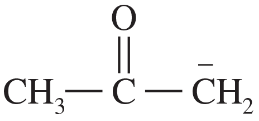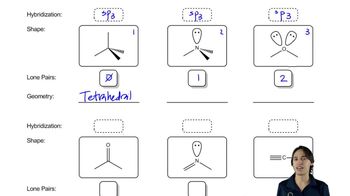Predict the hybridization, geometry, and bond angles for the central atoms in
a. but-2-ene, CH3CH=CHCH3



 Verified step by step guidance
Verified step by step guidance Verified video answer for a similar problem:
Verified video answer for a similar problem:



 7:44m
7:44mMaster Molecular Geometry Explained. with a bite sized video explanation from Johnny
Start learning